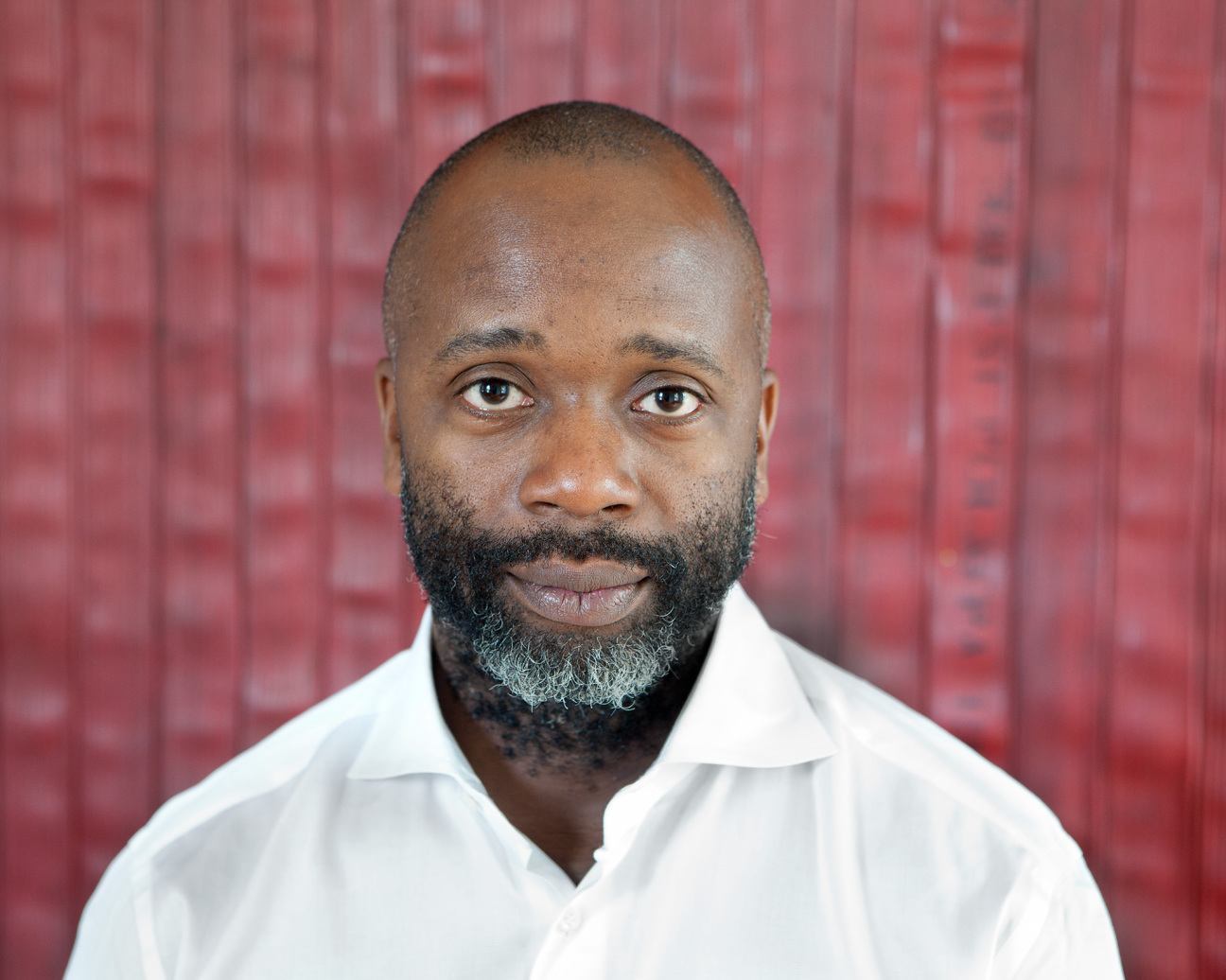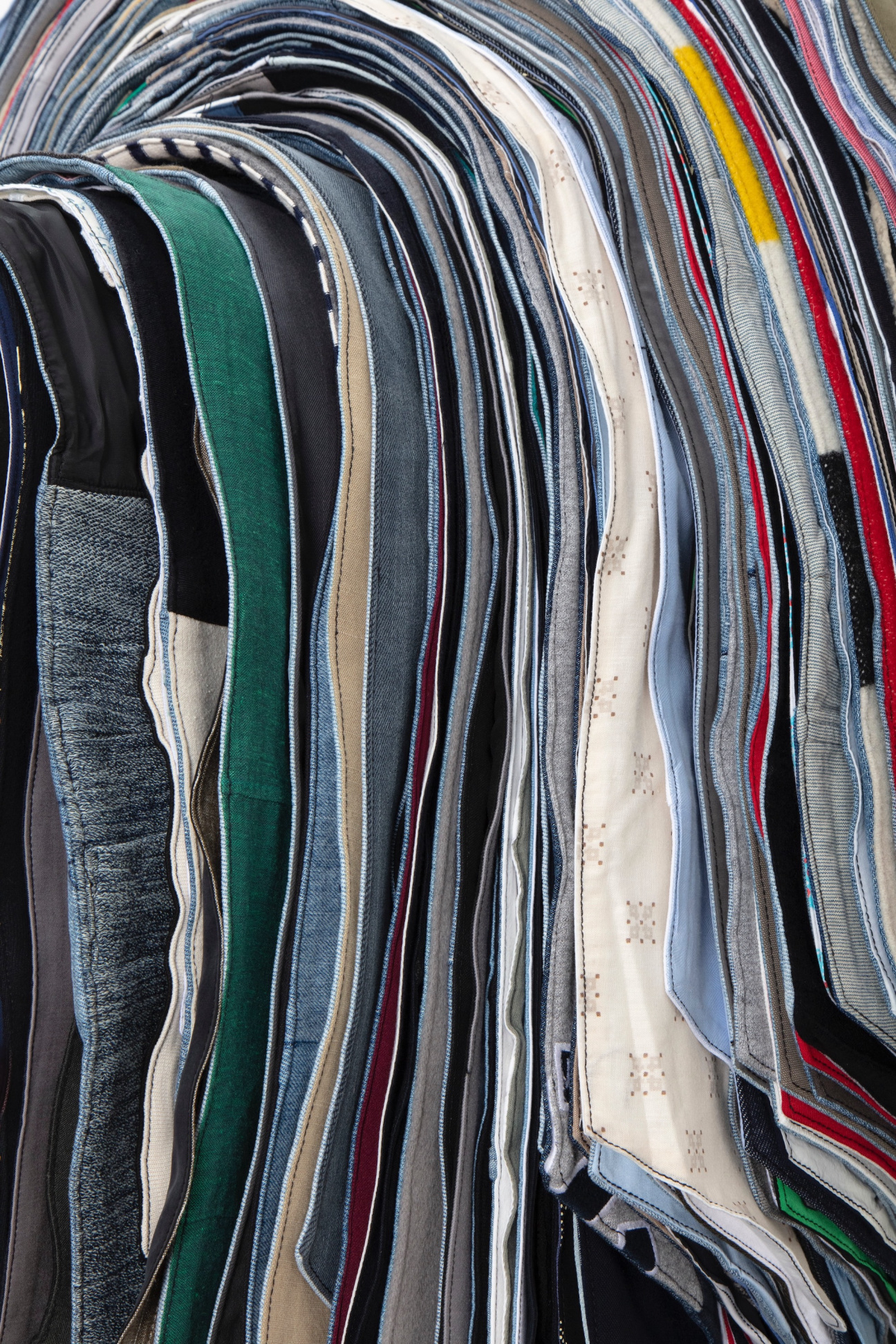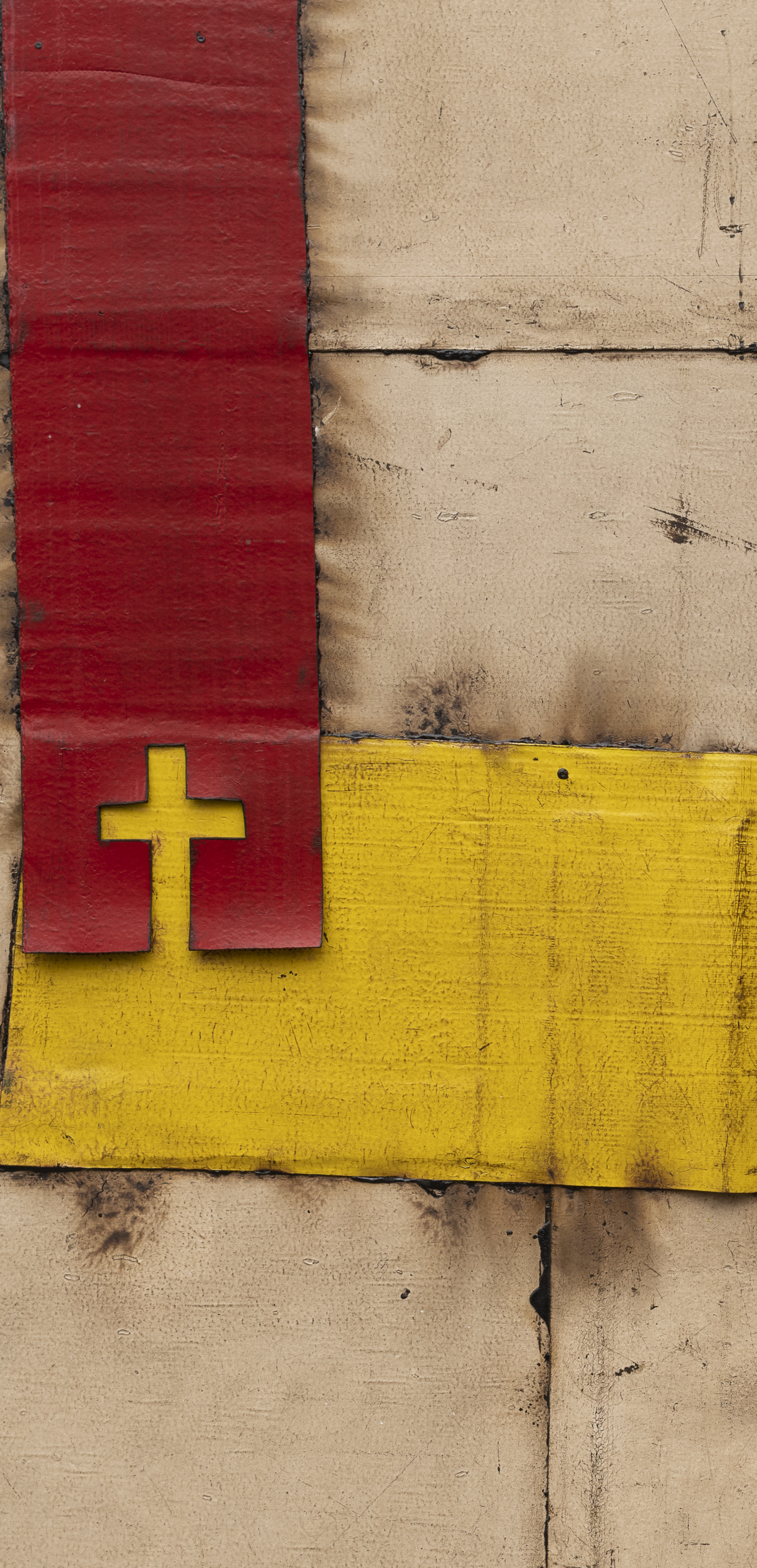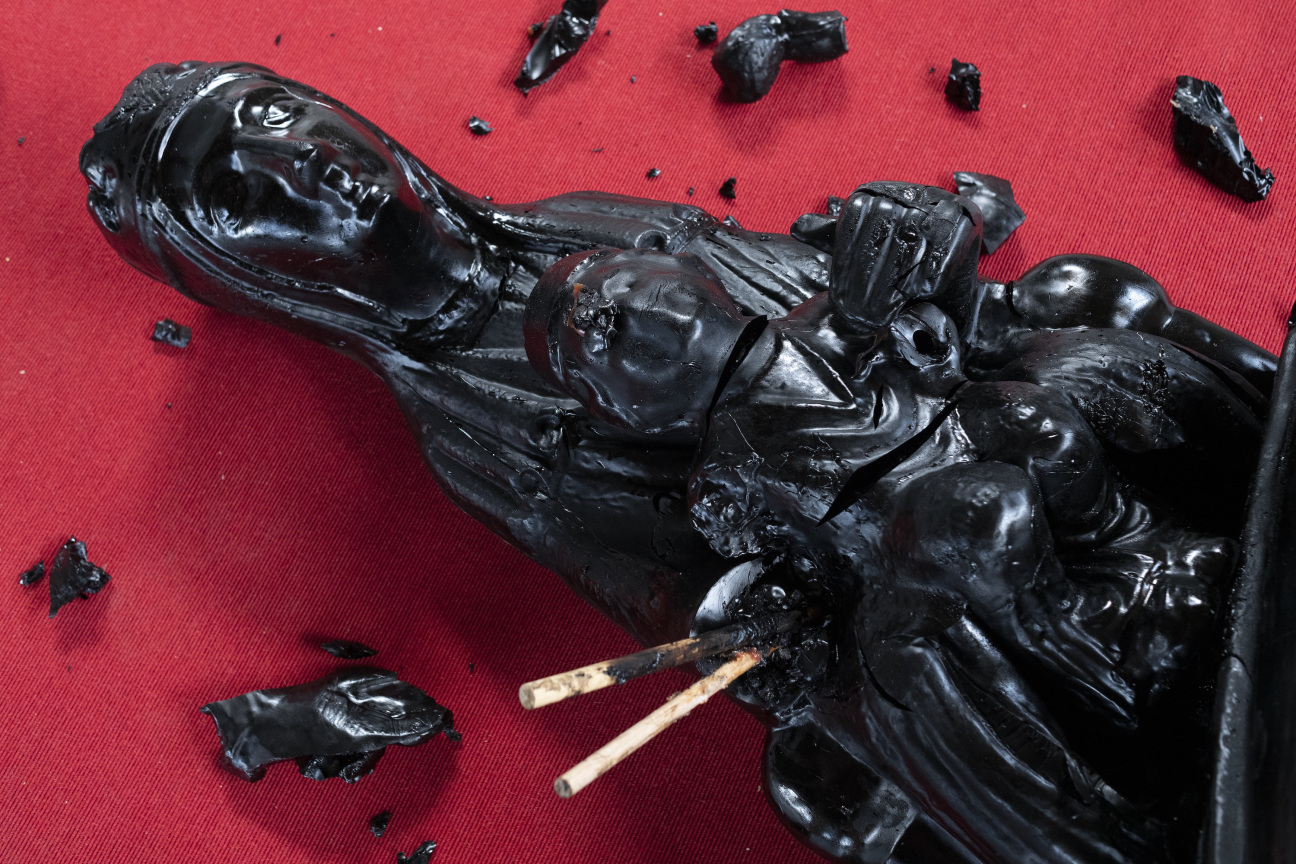
In 2005 Theaster Gates returned to Iowa State University from Tokoname, Japan. He had just completed a ceramics residency with master potters, and the reappearance at his alma mater was the academic culmination of his elemental interests: urban planning, religious studies, and ceramics. Over the next decade and a half, this interplay between concept and medium—particularly as it applies to Black identity—has captivated the artist’s interests, urging his endeavors inside his native Chicago and governing his multi-disciplinary practice. Happening upon his visual pieces or moving through his architectural and experiential works, you can feel it for yourself. Often Gates builds worlds by reenvisioning relics from distant or—often and—charged origins, such as his 2012 dOCUMENTA (13) installation 12, “Ballads for Huguenot House” in which he renovated an abandoned German hotel via industrial materials from Chicago’s South Side, or—for a different scale—his on-going “Civil Tapestry” series in which the artist stitches decommissioned fire hoses into colorful tapestries. In doing so, these interrogations, along with his sculptural objects and tar paintings, not only attempt to reckon with the past, sometimes they seem to rewrite it. As such, Gates describes his most recent and most comprehensive showing “Young Lords and Their Traces” as an “accumulation of ideas that are finally starting to make sense through materials.” The mid-career retrospective at the New Museum opens on the heels of another exhibition in New York City—“Vestment” at Gagosian’s 976 Madison Avenue gallery and, much further down south, a programming residency at Metrograph theater beginning this week entitled "The Trace" that, as he says, offers him “an opportunity to share a set of filmic relationships that were underexplored.” Varied in cultural and physical geography, the three occurrences are dedicated to Gates’s various chapters of practice, revealing the artist’s complex attempts to intellectualize, understand, and, in many ways, salvage the human experience by any means necessary.

JOSHUA GLASS: With three distinctive showings at the same moment, what was the experience of looking backward for the New Museum—an non-traditional retrospective—while creating works that are entirely new for “Vestment”?
THEASTER GATES: The impetus of “Young Lords and Their Traces” feels very different from exhibitions in the past. What makes the exhibition feel most like a survey is not its presentation of works from a certain period, but rather its accumulation of ideas that are finally starting to make sense through materials—like tar, clay, and wood—and in form. The exhibition is riddled with advice, kindness, and love that I have received from people who have passed on. I simply wanted to find ways to generate symbols of my sadness and my grief, but also give shape and form to the tremendous generosities that these great thinkers and makers have offered me through their forms, ideas, and friendship. In this sense, the exhibition is as much about sculpture or giving shape to feelings as it is about feelings. It is about deploying my practice to acknowledge their greatness. I wanted to have an absolutely clear citation of the people who moved me. It feels less like it is about art. The art, in this case, is about a deep belief in the power of human beings to make each other better, that we might all become our best selves, young lords, living treasures.

JG: Viewing the Gagosian show is a much different experience than touring through three floors of the New Museum. Conceptually, yes, but also in terms of literal works on site: ”Vestment” spotlights a selectiion of your complex clay and tar paintings while the latter’s nearly 100 objects span antiquities to video and spatial installation. What is the underlying connection (either implied or unexpected) between the two?
TG: My colleague at the University of Chicago Robert Bird had recently passed when I was beginning to conceive “Young Lords and Their Traces.” He was deeply engaged with Russian film, literature, and philosophy with an emphasis on the work of filmmaker Andrei Tarkovsky, and was just starting to work with artists like Cauleen Smith and thinking about the relationship between Communism and its adjacency to Black intellectuals and anti-capitalists in the Jim Crow South. After his passing, I ended up with his collection.

I thought I could engage with Tarkovsky on a deeper level as he was trying to get at things I find quite moving. There’s something about Tarkovsky’s pause that is so otherworldly, so distant from my world. If you can fix the camera on that everydayness as Tarkovsky did, and evoke the spiritual in the mundane that leads to a deeper understanding of the human experience and the objects and everyday things surrounding us. Tarkovsky’s seminal film Andrei Rublev is about religion without the church—maybe that’s why I connect to it.
In various moments throughout both exhibitions, I’m reflecting on how the cross becomes conflated in various moments of art history. It moves a form that has religious symbolic meaning to a form that has sociopolitical and artistic meaning. The cross is a formal device that both says and hides so much. I try to complicate that symbol. “Vestment” compliments my survey exhibition at the New Museum while focusing much more specifically on a specific read of Russian mysticism and on the garments evidenced in Andrei Rublev.


What I’m demonstrating in both exhibitions is that the cross of Tarkovsky is different from the cross of Suprematism. It moves back and forth between the possibility of a spiritual redemption and a political activation. It moves between one’s potential hope and one’s activistic tendencies. It moves between the cloak of oppression and subjugation that the church has historically used and the deep possibility of a form that might emerge in an Agnes Martin painting. Is it possible to allow that form to be redundant in its form and speak to all of these things?
It felt only appropriate, given Bird’s interest in Russian resistance, anarchy, and the Soviet project, that I would have my dad’s tar kettle as an adjacency and a nod toward the labor practices of my family. This carries through to “Vestment,” where I lean into formalism and mark making while paying homage to the skill transference through my father’s tarring.
JG: Last year the New Museum staged “Grief and Grievance: Art and Mourning in America,” which was conceived by the curator and your former collaborator Okwui Enwezor before his passing. How did his influence inform your showings?
TG: It’s reasonable to say that Okwui Enwezor and bell hooks are the galvanizing figures of “Young Lords and Their Traces” exhibition. Okwui’s advice to me is resonant throughout all three floors of the New Museum. It was he who said that I should make entire rooms that are filled with my tar works. It was a scale for which I couldn’t quite grasp when he said it. The corridor of the second floor is the beginning of a creation of a 60-foot tapestry, which is something that I’ve never done before.

JG: Nearly all of your work is reflective in some way or another, and the first floor of “Young Lords and Their Traces” offers a personal museum of sorts about you. Have there been any personal discoveries you made while preparing for both shows?
TG: I’m currently reading a beautiful book of Japanese death poems written by Zen Monks on the verge of death. Often, the Monks talk about how vain it is to talk about their own deaths. I’m also carrying a book with me on the history of Russian Cosmism and Constructivism. It features a beautiful essay entitled “The future of Earth and humanity” by Konstantin Tsiolkovsky that I think a lot about these days. Through this reading, I have become super interested in theories about eternities and the possibility of people living forever. I’ve discovered that I’m invested in the ways that we conjure a sense of immortality in our mortal selves. The forms that these preoccupations take are always shifting, because the work is always asking new questions about the appropriate material for a set of ideas. While I have some core investigations materially, I’ve discovered that I’m open.
“Young Lords and Their Traces” is on view until February 5, 2023 at the New Mueseum at 235 Bowery, “Vestment” is on view until December 23, 2022 at Gagosian 976 Madison Avenue, and "The Trace" runs until November 25, 2022 at Metrograph at 7 Ludlow Street, New York, NY.










 in your life?
in your life?

